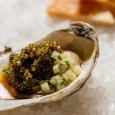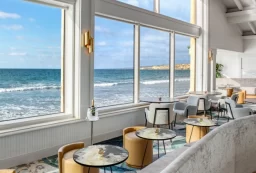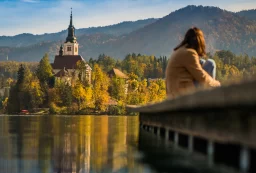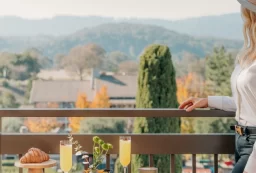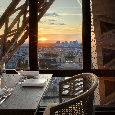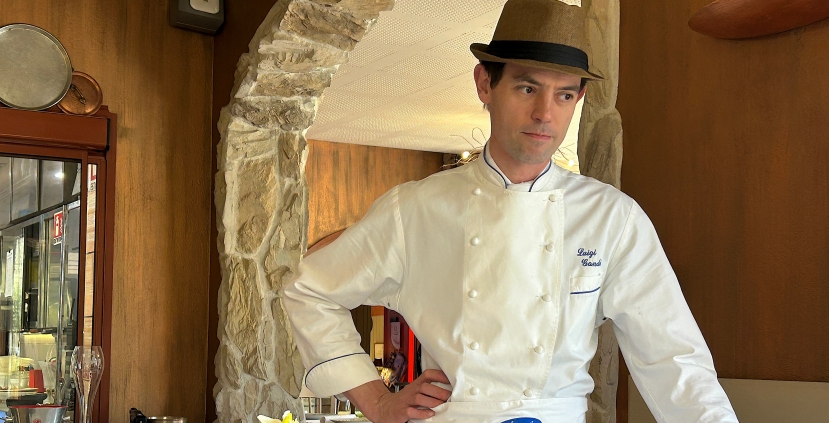
The geography of the Italian “Lake District” guarantees both variety and consistency in the quality of its cuisine. Italy’s northern reaches encompass Piedmont, Lombardy, Veneto, and Trentino-Alto Adige as well as Lake Como, Lake Garda, Lake Maggiore, and other lakes. It all adds up to immersive food experiences and internationally acclaimed restaurants at every turn.
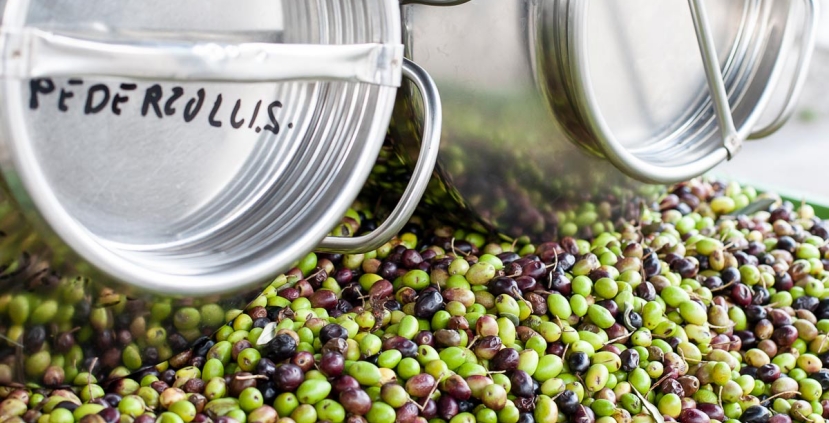
Storytelling and surprises from food artisans provide additional context for food-minded travelers. Several family-owned agritourism destinations allow visitors to see and taste how Northern Italy’s delicacies move from farm to table. A stellar example is Madonna Della Vittorie, which began over 70 years ago as a grappa distillery. In recent decades, it expanded to include vineyards, a winery, an artisanal olive oil production facility, and a restaurant where all the fruits of the family’s labor are brought together.
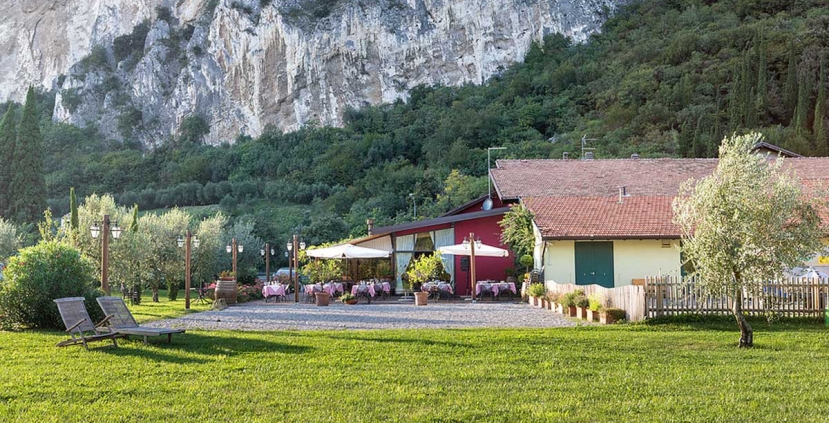
Trout, perch, char, whitefish, and other lake fish are generally the proteins of choice among the chefs. With over 800 rice producers thriving in Northern Italy, risotto takes on many forms through seasonings and preparations that vary dramatically by location and family recipes. The same goes for pasta, polenta, and gnocchi. The olive oils chefs cook with and serve at every meal are produced in small batches and influenced by the unique microclimates and terroirs.
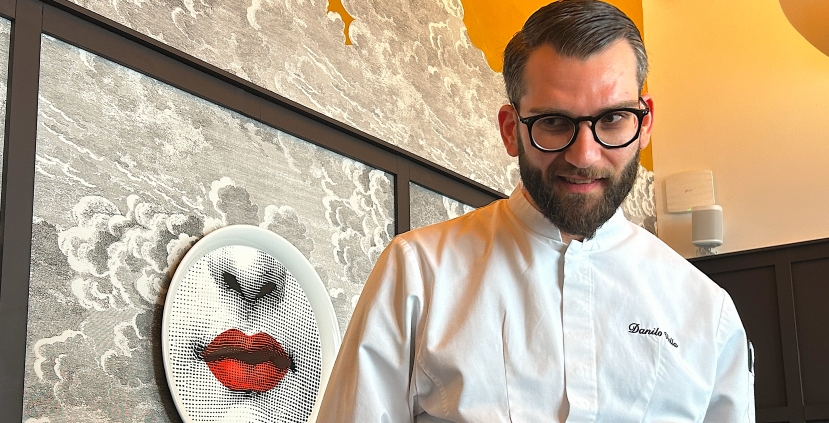
Traditional restaurants like Alla Borsa in Valeggio sul Mincio near Verona continue to draw customers in with various iterations of “Love Knots” tortellini, which the family has perfected through the years. Innovative chefs like Danilo Vella of Bottega Comancini in Como keep classic ideas relevant through inventive twists on favorite dishes.
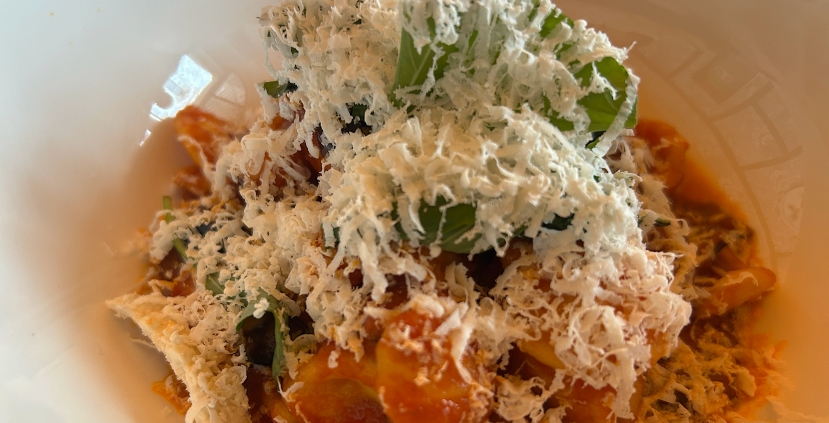
However, two restaurants—Michelin-starred Ristorante Salice Blu and historic Crotto dei Platani—stand out because of the way the kitchens push native ingredients sourced from their figurative and literal backyards in exciting new directions while respecting the traditions that predate them.
"Our guests can taste what’s in season at the moment through the vegetables we pick in our garden….The flexibility of the menu is emphasized, with dishes being reinvented based on the availability of ingredients.--Luigi Gandola, Ristorante Salice Blu "
In the hills around Lake Como, several boutique restaurants offer cooking classes and other experiences that allow avid home cooks to get inside the mind of the region’s acclaimed chef. At first glance, Ristorante Salice Blu follows that tradition. Gardens flank the rustic building while antique cooking gear, gardening implements, and retro posters are playfully arrayed on the walls.
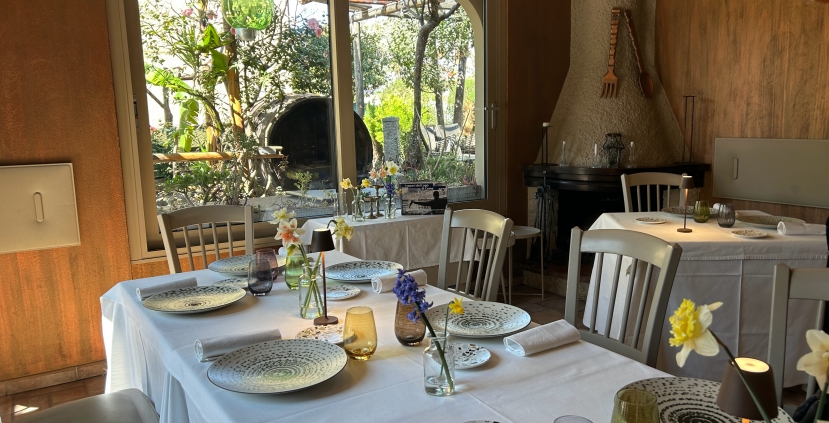
When you step inside, you may catch a glimpse of Flora swooping back and forth between the kitchen and dining room to ensure necessary details are in place. This is understandable, as she and husband Mino co-founded the restaurant in 1973, and she is the mother of chef Luigi Gandola. Building upon his parents’ success, he took over as chef in 2005 and has managed the restaurant and its vision with his wife Camila since 2022, gaining fame around Italy in the process.
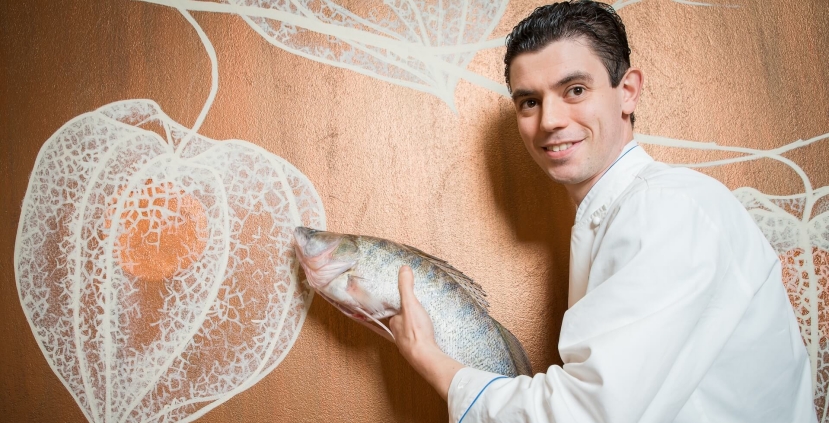
“Our tasting menus are about creating good memories as our guests can taste what’s in season at the moment with the vegetables we pick in our garden,” says Luigi Gandola, whose showmanship in describing his technique for each course explains why his cookbook is a bestseller and his television appearances. “The flexibility of the menu is emphasized, with dishes being reinvented based on the availability of ingredients, ensuring a unique dining experience every time. It reflects the availability of local fish, with dishes created based on what is caught that day.”
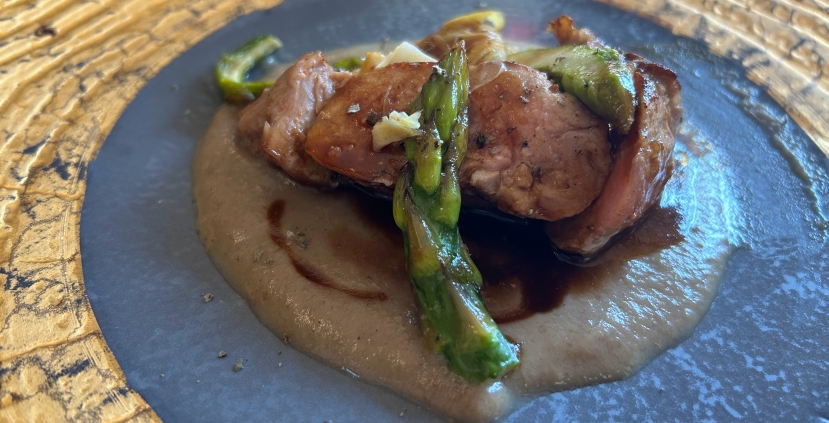
“Though I don’t smoke cigarettes, I love to smoke meat on the fireplace,” he muses, as Camila holds up his latest recipe coffee table book and flips to certain pages that somewhat match the dishes brought out. They are modified for seasonality and include a squash soup, risotto topped with lake perch, and a roast with fresh asparagus allowed to steep for a few extra seconds in aromatic smoke. “Much of the wood we use is sourced from our forest, and we use our knowledge on what woods to use as it is rooted in our traditions. We use cherry wood to smoke salmon or trout and chestnut wood for meats.”
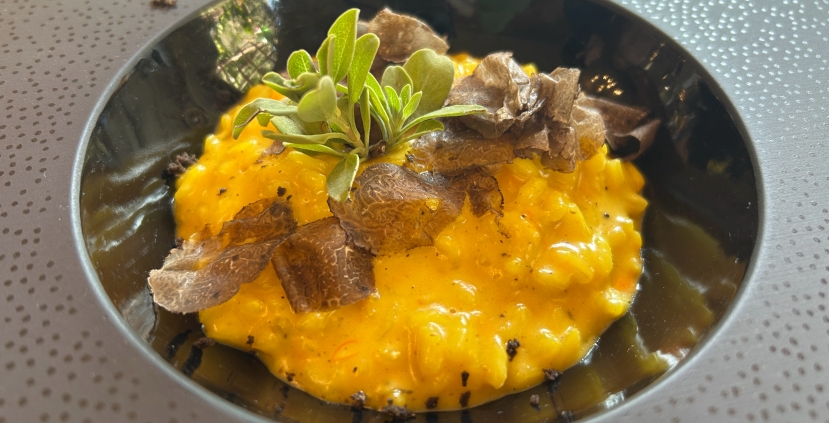
In addition to customized tasting menu packages, the Gandolas also offer an extensive menu of cooking classes, tours at their favorite dairy and other purveyors, truffle hunts, and food-focused boat tours on Lake Como. However, don’t tell Luigi Gandola he’s selling boat tours. He’s serving up something far more sensory, always featuring tastes of different things, all topped off with a glass of wine and a good story.
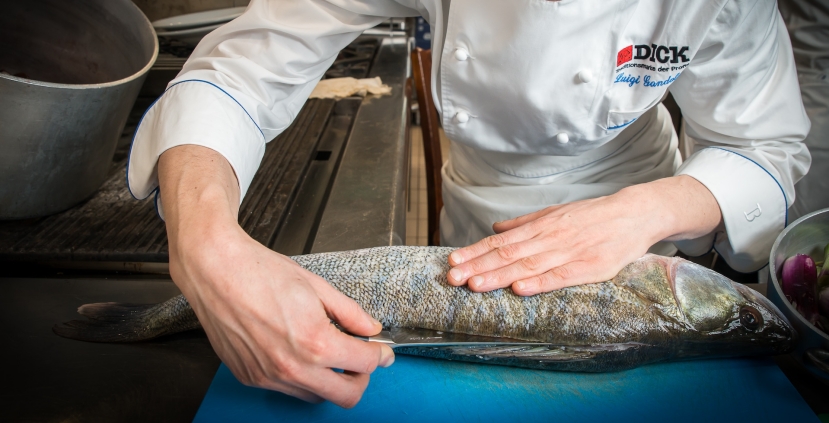
"We have a different outlook as we want to be defined as a classical restaurant, though one that’s open to new ways of using our local ingredients. Our recipes are developed through research, and behind every recipe, there’s a story that will appeal to our guests’ natural curiosity about what separates us from other parts of Italy. --Francesco Cavadini, proprietor, Crotto dei Platani "
Like Gandola, Francesco Cavadini is successfully continuing the restaurant his parents started in the 1970s and building out from the culinary foundation to attract food-savvy clientele in Italy and abroad. His kitchen turns out pastas made with organic eggs and oils, and relies heavily on locally-sourced lake fish, vegetables, and other organic foodstuffs. What sets Crotto dei Platani in Brienno apart from other Lake Como-area restaurants, however, is how he and his culinary team reconcile the region’s culinary heritage with new ideas so the results are at once approachable and exciting.
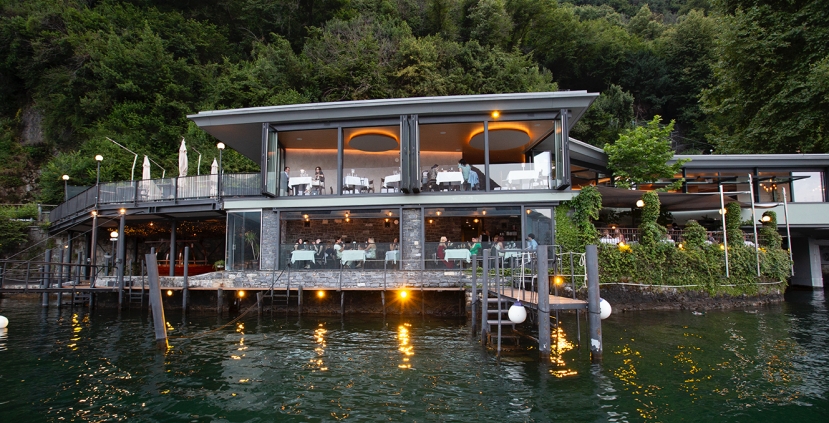
To bring the best out of the whitefish before the black truffle was added, and create secondi like ravioli with botarga and leeks, and mains such as the sturgeon with lachiote sauce and a coating of licorice, Cavadini explains he goes fishing with a professional fisherman to understand the nuances of catching and harvesting the Italian lakes’ bounty. The anecdote, naturally, imparts an additional appreciation for the dishes that are specific to the restaurant yet respect generations of traditions from family kitchens.
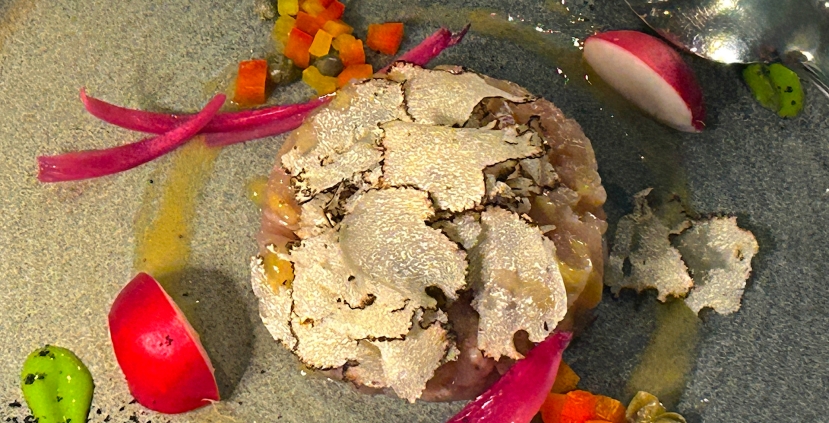
The owner, also an assessor for the local tourism board, says the 18th-century building helps him promote local culture and history. It has a storied past that, like the dishes, displays its roots proudly while being updated through the generations. It was a wine shop before it became a guest house in 1855. The property once housed a bocce court and featured a cave and garden that was first extensively renovated in 1918 and, more recently, was transformed into a versatile event space that can accommodate up to 220 people with privacy for smaller groups.
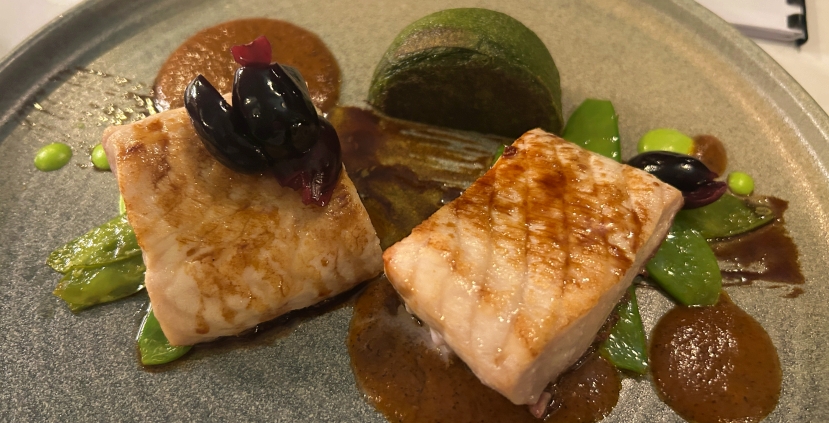
“I see us as storytellers relayed through every ingredient which has its own origin and process before it is worked into the recipe,” he says as brimming share plates with appetizers and antipasti are placed on the table in semi-formal fashion. Aromatic whitefish tartare with black truffles, an antipasto with a mix of different lake fish, and a foie gras plate with colorful accoutrements make me and my colleagues swoon. “We don’t want our plates to only be nice looking,” he affirms. “Experimentation should be about finding the best flavor profiles rather than creating something trendy.”
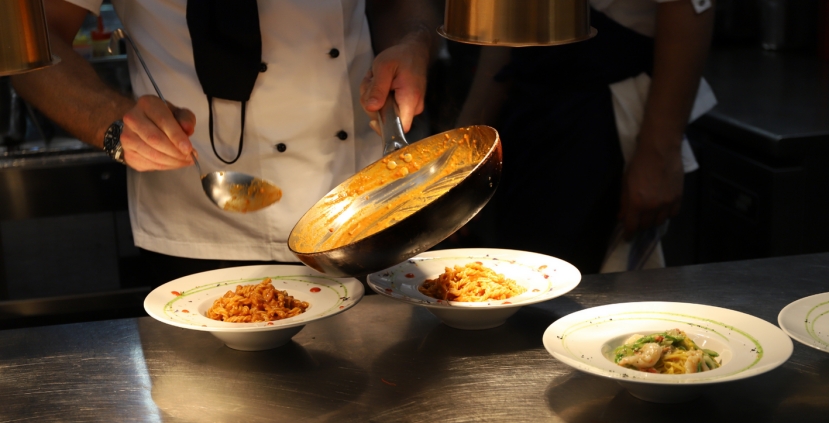
For more information on Northern Italy and the rest of the country, visit italia.it.

